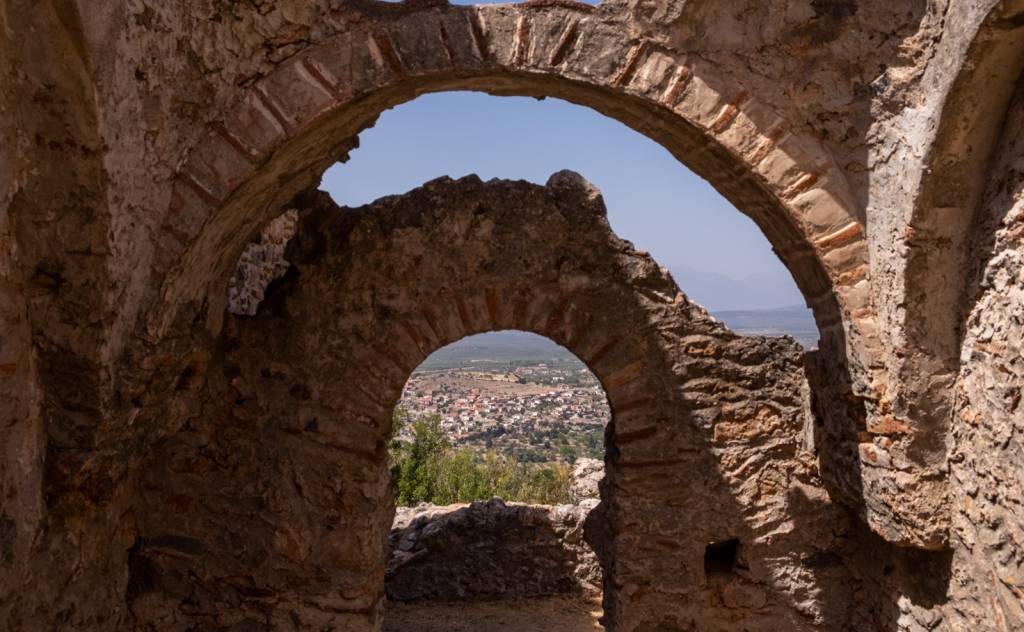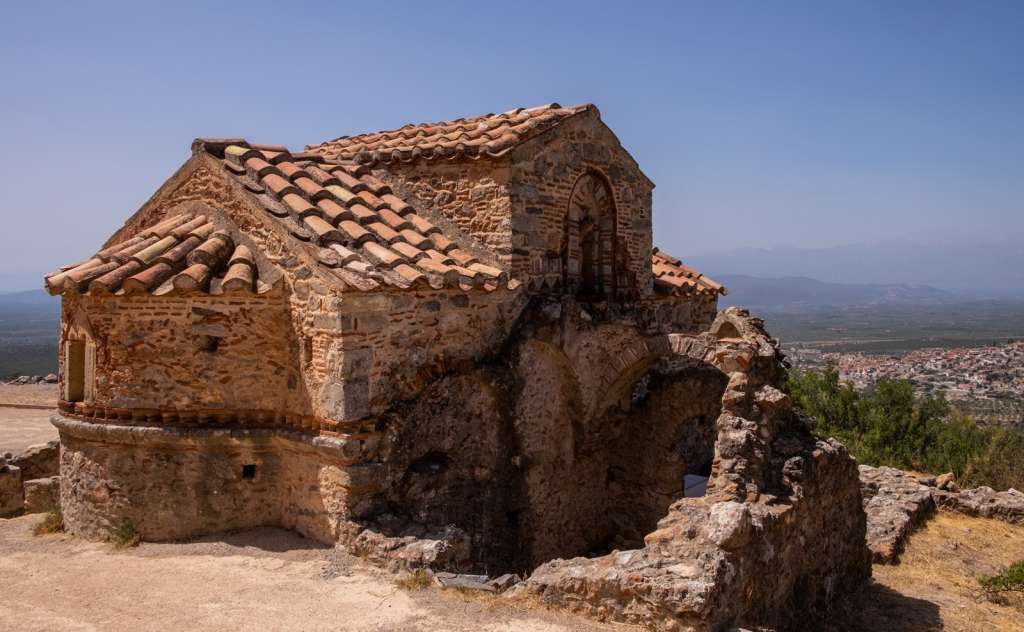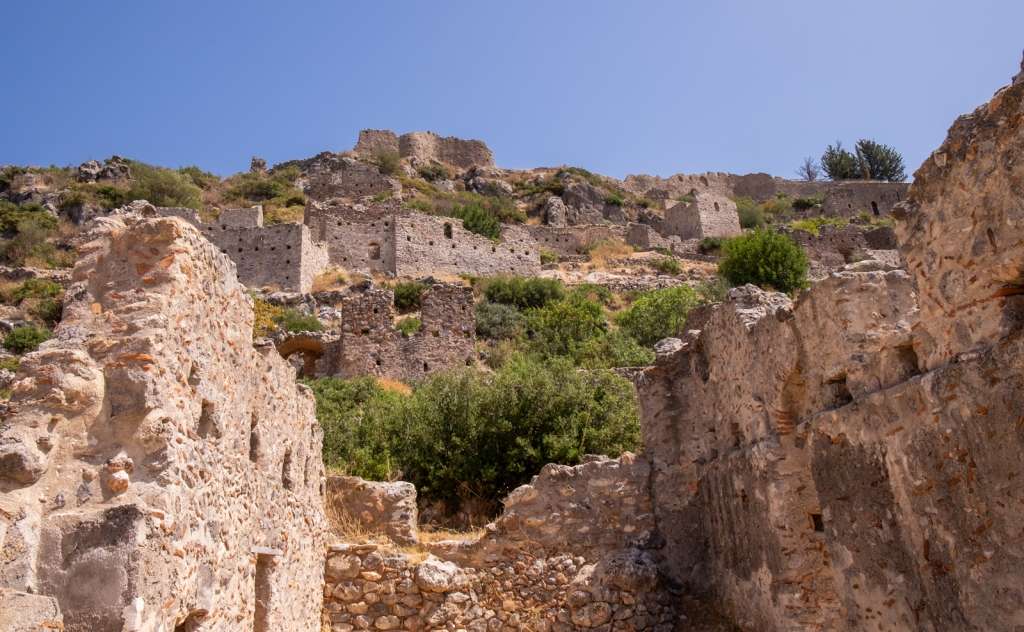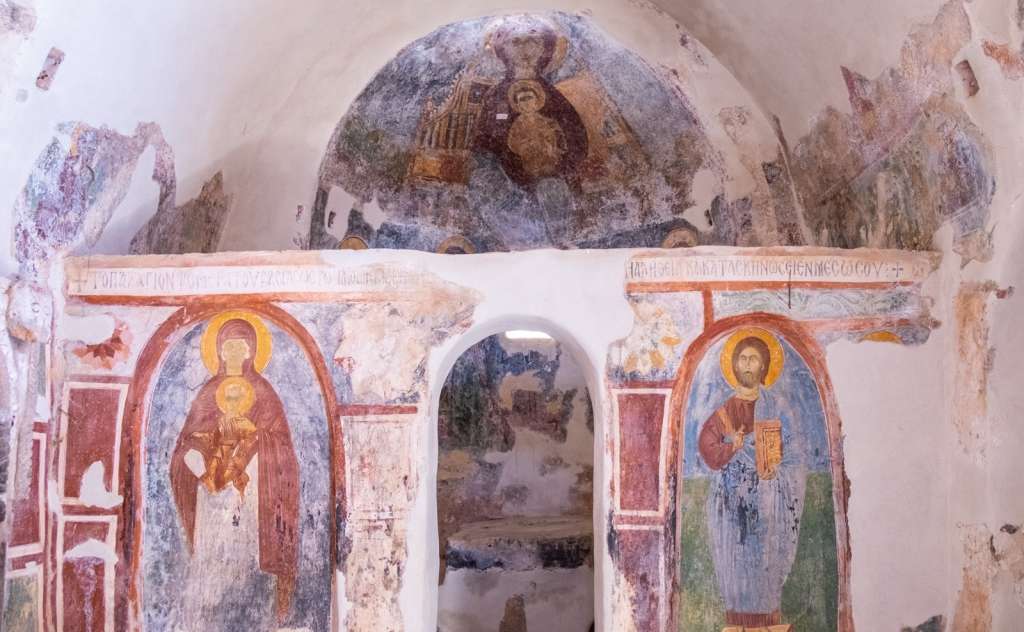Geraki Castle
The Frankish Castle of Geraki is 5 km away from the current settlement. It is built at an altitude of 400 meters at the foot of Mount Parnon, at a place which has been inhabited since prehistoric times. The castle was built, around 1250, by the French baron Guy de Nivelet, or by his son John. Nivele also gave the name "Geraki". The city had been known since antiquity as "Gerontrai".
Geraki, together with the Castle, remained in the hands of the Franks for only fifty years. In 1262, they were forced to hand it over to the Byzantines along with the castles of Monemvasia, Mystras and Mani as a ransom for the release of William Villehardouin and the other barons and knights who had been captured at the Battle of Pelagonia (1259). The Byzantines held Geraki for 200 years, while, in 1463, the Castle of Geraki was occupied by the Venetians and in 1468 it passed into the hands of the Turks. The Castle was abandoned, approximately, in the 15th or 16th century, when Geraki was moved to the place of the current settlement.
The remains of the Castle can be seen on the two peaks of the hill, known as "Paleokastro". The castle is preserved αt the northern top and at a lower level, the buildings of the main Medieval settlement are preserved. We owe the unique diagram of the settlement to the English scholar Ramsay Traquair, (1905), where buildings, fortifications and the relief of the land are accurately marked. The walls of the Castle are ruined. Only some fortifications are preserved, as well as the turrets on the side of the ridge of the hill.
The number of churches that survive in the Castle is impressive, which is why the place is also known as "Small (Mikros) Mystras" of Laconia. The visitor, here, can see thirty temples, ten of which are located within the Medieval settlement. The most remarkable are the temples of Agios Sozon and Agios Athanasios, which are both with cruciform domes. These churches are supported by pillars. Both temples date back to the 12th century and are decorated with frescoes from the 12th and 14th centuries. Agios (Saint) Georgios is built in the most central part of the precinct. It is a three-aisled vaulted basilica with a narthex. The marble iconostasis, which has a sculptural decoration with Frankish influences, is of particular interest. In front of the plateau of the temple you can see the one of the two large cisterns of the Castle.
The following churches are equally important: the cross-roofed church of Agioi Theodoroi, the church of Prophet Ilias (Mount Athos type with dome) with 17th century frescoes, the cross-roofed church of Agia Paraskevi with 13th century frescoes in three layers, the single - aisled church of Panagia Eleousa in the type of a vaulted basilica (with frescoes of 1431), etc. The cruciform church of Taxiarches stands out, where, among other things, there is a mural that depicts the fall of Jericho from the sound of the Israelites’ trumpets under the leadership of Jesus of Nazareth.
In addition to the aforementioned temples, there are about forty other temples, which are in ruins. Finally, during the construction of some of them, around the village, marbles were used which came from ancient temples, buildings, and even pedestals of statues.








